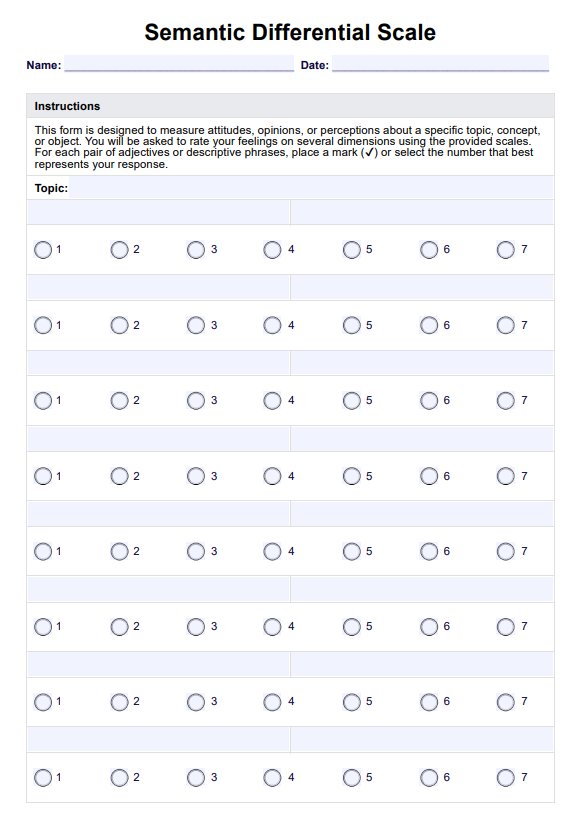Semantic Differential Scales are powerful tools for measuring attitudes, opinions, or perceptions about specific concepts, using bipolar adjective pairs (e.g., "happy-sad" or "strong-weak"). These scales typically employ a 7-point format, allowing respondents to express their position between two opposite meanings.

Semantic Differential Scales
Access our free Semantic Differential Scale template to customize for your needs. Easily integrate it into your practice to measure attitudes and perceptions effectively.
Semantic Differential Scales Template
Commonly asked questions
The semantic differential technique uses bipolar scales with opposite adjectives (e.g., "valuable-worthless") to measure attitudes, focusing on connotative meanings of concepts. A Likert scale, on the other hand, asks respondents to rate their agreement with specific statements (e.g., "I strongly disagree" to "I strongly agree"). While both are rating scales, they serve different purposes: semantic scales analyze multidimensional perceptions, while Likert scales focus on agreement with particular concepts.
Healthcare professionals often use Semantic Differential Scale questions to assess various aspects of patient care, tailoring them to capture nuanced perceptions and attitudes. For example, questions like "Trustworthy-Untrustworthy" can evaluate provider relationships, while "Comfortable-Uncomfortable" may measure pain management perceptions. Similarly, questions such as "Accessible-Inaccessible" can assess healthcare accessibility, and "Empathetic-Unempathetic" might evaluate the emotional connection patients feel with their care providers. This flexibility allows the scale to be customized for specific healthcare contexts, including mental health services, patient satisfaction, or even brand perception in healthcare organizations.
EHR and practice management software
Get started for free
*No credit card required
Free
$0/usd
Unlimited clients
Telehealth
1GB of storage
Client portal text
Automated billing and online payments











